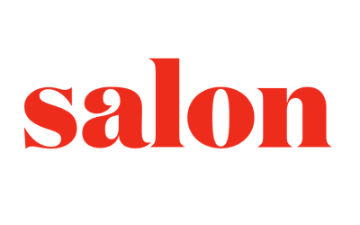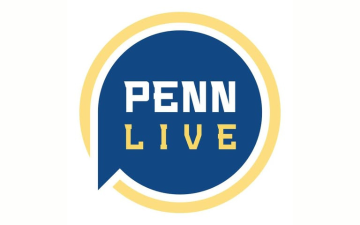
Three students collaborating near a chalkboard. One student is writing on the board. Photo by fauxels/Pexels.
Grace A. Davis '25, was a 2022-23 Government Ethics Fellow at the Markkula Center for Applied Ethics, is from the West side of Cleveland, Ohio. She is pursuing a double major in political science and philosophy with a minor in Women & Gender Studies. Views are her own.
LGBTQ+ youth are a deeply vulnerable community in Ohio. In a report from UCLA Williams Institute in 2019, Ohio ranks 25th in the nation on public support of the LGBTQ+ community (Mallory et. al.). In recent years, more and more anti-LGBTQ+ policy is being presented, specifically targeting youth. The main context in which LGBTQ+ youth are being attacked in these policies is in their school systems. The most threatening policies are exported from the statehouse and into state boards and local school districts (Peeples). School, a place that was once a safe haven for LGBTQ+ youth—many of which do not feel comfortable in their own homes—, has become a place of high risk for LGBTQ+ youth because of these policies. My work this year with the Markkula Center for Applied Ethics has been on the ethical issues that arise from anti-LGBTQ+ policies as it relates to schools and recommendations on how to maintain healthy and safe environments for LGBTQ+ youth.
Current Ohio Policies
From the social justice and advocacy spaces, fights against anti-LGBTQ+ policies in Ohio come in two forms: proactive and preventative (Poe). Proactive work is more common in progressive states; policies that ensure gender-inclusive language in classrooms, adjusting curriculum to be more inclusive (e.g. critical race theory in history classes), or allowing names and pronouns chosen by queer children, despite what their government name may be. Policies such as these would not work in a state like Ohio. Ohio has become an increasingly polarized and conservative state. Once a vital swing state, Ohio “really isn’t a representative of the whole country the way that it once was,” according to Cedarville University political science professor Mark Caleb Smith (Hampton). According to NBC News contributor David Wasserman, Ohio is an “overwhelmingly white working-class, and the Appalachian parts are even further right than they were four years ago.” Even if a student goes to school in a more liberal area—nearly ⅓ of schools in Ohio are private schools that pull kids from various cities—, they still may be going home to conservative households (Hampton). This only amplifies the need for safe classrooms.
Proactive policies are not common in Ohio like they are in other states. In terms of absent policies, there are currently no nondiscrimination laws covering LGBTQ+ students, no anti-bullying policies covering LGBTQ+ students, and no LGBTQ-inclusive state curricular standards (“Ohio’s Equality Profile”). Instead, advocates must do preventative work. Preventative work is “putting out the fires,” and stopping negative policies from becoming enacted (Poe). The most pressing negative policies that necessitate preventative actions are “Don’t Say Gay” bills that have been regularly presented, though they have all stopped at committees, and bills like House Bill 8, which would require parental notification if their child were to disclose LGBTQ+ identity or questioning to a teacher, nurse, or counselor, specifically as it relates to gender identity. When asked about HB 8, Cynthia Peeples, the founding director for Honesty in Ohio Education, said that this “essentially [creates] a forced outing bill,” (Hancock).
Policies such as these are incredibly threatening to LGBTQ+ youth. In a state that already lacks adequate support for the LGBTQ+ community, specifically targeting youth with these policies can create a very harmful classroom environment. The way a teacher approaches their LGBTQ+ students can impact the ways in which those students interact with each other. Presently, based on a 2017 Youth Risk Behavior Surveillance Survey, “LGB students in Cleveland were more than twice as likely to report being bullied at school and electronically bullied in the year prior to the survey than heterosexual students,” (Mallory et. al.) In a 2017 GLSEN National School Climate Survey of LGBTQ middle- and high-school students, it was found that 73% of Ohio respondents “had experienced verbal harassment based on their sexual orientation at school, and 60% said they had experienced verbal harassment based on their gender expression,” (Mallory et. al). These statistics are relatively easy to infer; children mimic what they see adults do. If our present politics are pushing anti-LGBTQ+ policies and creating a culture of attacking LGBTQ+ youth, children will follow these patterns. With combining the policies and the classroom culture, school has gone from a safe haven to another unsafe environment.
Ethical Concerns
The current political issues of targeting LGBTQ+ youth and their experiences in schools raises serious ethical concerns. In respect to the Markkula Center for Applied Ethic’s six frameworks for ethical decision making, two frameworks most readily apply to illuminating these concerns:
Common Good Lens
The common good lens as presented by the Markkula Center is rooted in the approach that “life in community is good in itself and our actions should contribute to that life,” (Velasquez et. al.). The main focus of this lens is that ethical decision making should focus on respect and compassion for all people, especially the vulnerable. This applies to the issue of LGBTQ+ youth in schools in that preventative work and protective policies have the goal to protect as many students as possible, specifically their most vulnerable. Preventative measures help to ensure a community to all youth.
Virtue Lens
The virtue lens provides ideals “which we should strive [towards] and which allow the full development of our humanity,” (Velasquez et. al.).Applied to this problem, to ensure virtue ethics is to ensure that LGBTQ+ youth, or heterosexual youth who are discovering themselves in their own right, can expect compassion from others, and have the ability to develop and engage in their schools wholeheartedly.
Recommendations
Following my research, talking with community-based organizations and educators, and analyzing current legislation in Ohio, I have found two main recommendations for creating safe spaces for LGBTQ+ youth:
Preventative Policies
The first recommendation is to continue with preventative work. With Ohio’s current political landscape, preventative policy is going to be the more successful option as opposed to proactive work. More specifically, preventative work against taking away confidentiality is the most crucial and pressing issue for advocates. Bills such as HB 8 take away the ability for an LGBTQ+ student to confide in a teacher, counselor, or nurse about their questioning identity. That space may be even more necessary if they are not coming from a safe home. A child should have the ability to seek comfort and compassion in their school environment without fear that anything they share may then be sent back to their guardians.
What makes these attacks so difficult to navigate is that they are under the new campaign of “Parents’ Rights,” as opposed to the more historical “Save Our Children” campaigns. These bills are geared towards conservative parents for support, making them believe that it is their right to know whether or not their child is questioning their identity. The danger of this framework is that it threatens the ability for children to authentically learn who they are. Preventative work aims to give LGBTQ+ children the autonomy to discover themselves and come out to their community when they feel safe and able to. And if their support system is not found in their homelife, it should be protected in the other place where they spend most of their childhood: school.
Data Collection for Teachers
A second recommendation based on my discussions with educators and community-based organizers is in respect to data collection on LGBTQ+ youth, or those that feel comfortable disclosing their identity. Providing teachers with information on the likelihood of having LGBTQ+ youth in their classrooms, as well as ideas for how to curate a safe environment coming from the youth themselves can help to ensure a greater community of support and compassion. Data collection can inform educators to be more aware of how they can develop the common good and comfort in their classroom settings. Children follow by example; if students see their teachers acting with compassion, then they will be more likely to follow suit. Though policy may prohibit teachers from being explicitly supportive of LGBTQ+ students, data collection can better inform them on how necessary it is to maintain an open and welcoming environment for their students.
With preventative measures and informed teachers working together, LGBTQ+ youth can have better assurance that they are safe, welcomed, and cared for in their classrooms. When the rest of the state may be seeking to attack them, this vulnerable community deserves and needs protections.
Conclusion
When considering the ethical issues of policy affecting LGBTQ+ youth in Ohio schools, the overarching question is: what is the real threat? It is the threat of becoming your fullest and truest self. Conservative legislators and anti-LGBTQ+ supporters are most threatened by a person that cannot be contained, broken down, or restricted. This mindset has taken on many forms, including the current one of pushing that parents have the right to control and dictate who their children are. The reality is that LGBTQ+ people are here and deserve the same love, freedom, and safety as all people do. For especially vulnerable youth, it is important that they are ensured secure spaces to grow, learn, and explore.
Works Cited
Hampton, Deon J. “‘Ohio has taken a different turn’: Ohio no longer appears to be a swing state.” NBC News. 12 November 2020. https://www.nbcnews.com/politics/2020-election/ohio-has-taken-different-turn-ohio-no-longer-appears-be-n1247507
Hancock, Laura. “Should schools out transgender students to parents? Ohio House could decide next week.” The Plain Dealer. 14 June 2023
Mallory, Christy et. al. “The Impacts of Stigma and Discrimination Against LGBT People in Ohio.” UCLA Williams Institute. November 2019. https://williamsinstitute.law.ucla.edu/publications/lgbt-stigma-discrim-oh/
“Ohio’s Equality Profile.” Movement Advancement Project. 2023. https://www.lgbtmap.org/equality-map-profiles/OH.pdf
Peeples, Cynthia. Founding Director, Honesty for Ohio Education. Personal interview. 19 November 2022.
Poe, Kathryn. Public Policy and Digital Communications Manager, Equality Ohio. Personal interview. 25 October 2023.
Velasquez, Manuel et. al. “A Framework for Ethical Decision Making.” Markkula Center for Applied Ethics. 5 November 2021. https://www.scu.edu/ethics/ethics-resources/a-framework-for-ethical-decision-making/


